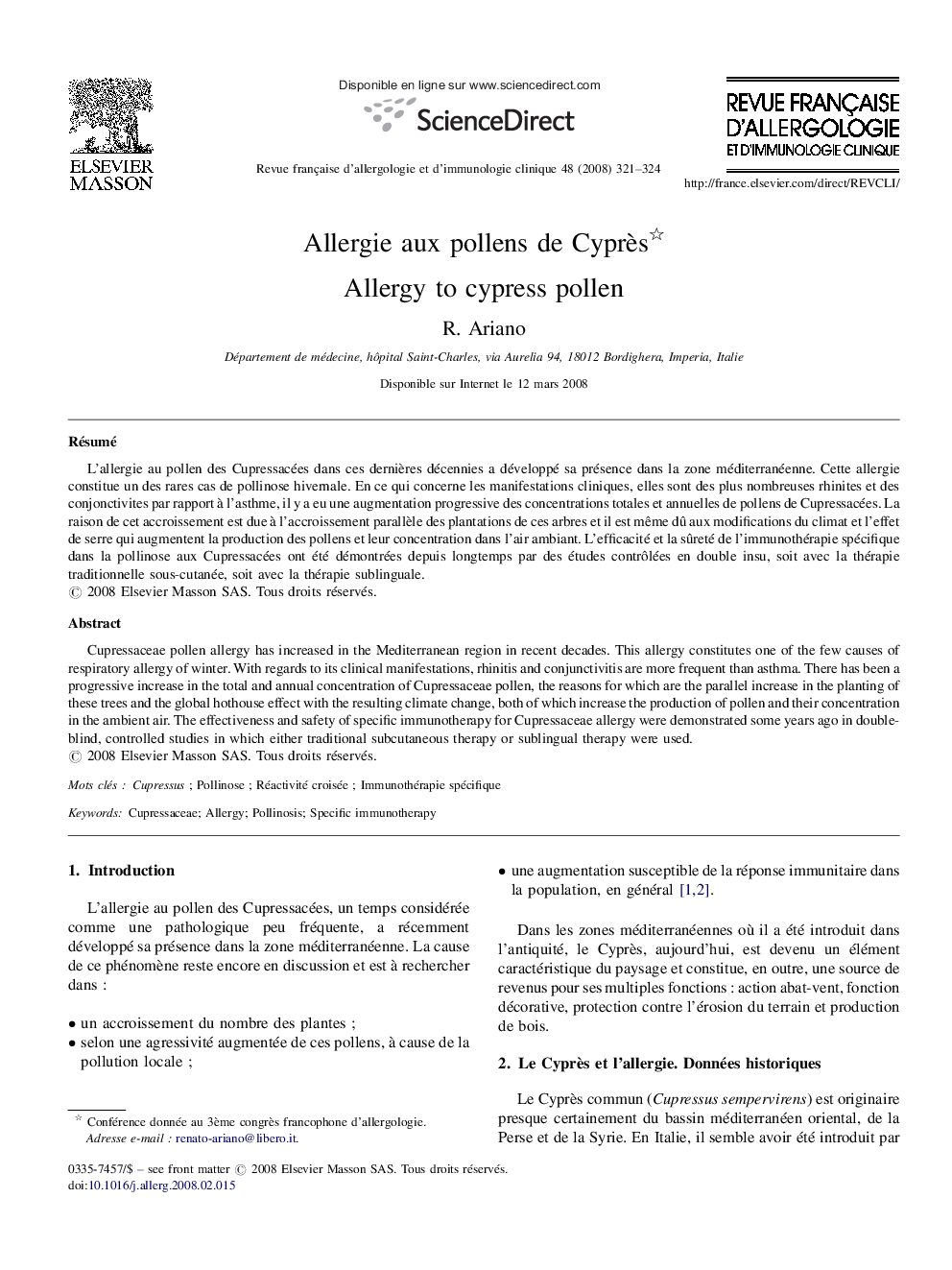| Article ID | Journal | Published Year | Pages | File Type |
|---|---|---|---|---|
| 2770238 | Revue Française d'Allergologie et d'Immunologie Clinique | 2008 | 4 Pages |
RésuméL’allergie au pollen des Cupressacées dans ces dernières décennies a développé sa présence dans la zone méditerranéenne. Cette allergie constitue un des rares cas de pollinose hivernale. En ce qui concerne les manifestations cliniques, elles sont des plus nombreuses rhinites et des conjonctivites par rapport à l’asthme, il y a eu une augmentation progressive des concentrations totales et annuelles de pollens de Cupressacées. La raison de cet accroissement est due à l’accroissement parallèle des plantations de ces arbres et il est même dû aux modifications du climat et l’effet de serre qui augmentent la production des pollens et leur concentration dans l’air ambiant. L’efficacité et la sûreté de l’immunothérapie spécifique dans la pollinose aux Cupressacées ont été démontrées depuis longtemps par des études contrôlées en double insu, soit avec la thérapie traditionnelle sous-cutanée, soit avec la thérapie sublinguale.
Cupressaceae pollen allergy has increased in the Mediterranean region in recent decades. This allergy constitutes one of the few causes of respiratory allergy of winter. With regards to its clinical manifestations, rhinitis and conjunctivitis are more frequent than asthma. There has been a progressive increase in the total and annual concentration of Cupressaceae pollen, the reasons for which are the parallel increase in the planting of these trees and the global hothouse effect with the resulting climate change, both of which increase the production of pollen and their concentration in the ambient air. The effectiveness and safety of specific immunotherapy for Cupressaceae allergy were demonstrated some years ago in double-blind, controlled studies in which either traditional subcutaneous therapy or sublingual therapy were used.
